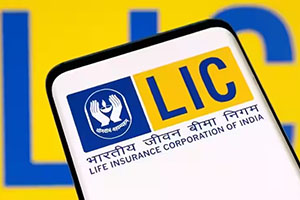Types, Advantages & Comparison Features of Child Insurance
Table of Contents
Child insurance is an investment as well as an insurance plan. It is the policy that you buy to plan the future financial requirements of your child by accumulating money over a time period. Extremely helpful for parents and the child over the years, the child insurance plan provides a lump sum amount at the end of the policy term. Let us find out more about child insurance plans by shedding light on its types, advantages and comparison features.
Types of Child Insurance
Child insurance can be categorized into three types:
- Child ULIP - Child ULIPs come with three major elements, high insurance coverage, disciplined investments, and participation in the equity market. As per these three benefits, the sum assured is given to the nominee child on death of the insured parent with future premium waived off. Moreover, the maturity value is paid at the time of maturity.
- ULIP - ULIPs are good for longer terms. As far as the payouts at maturity of ULIPs is concerned, they are determined by the markets due to the reason that funds in ULIPs are invested in equity instruments. The insurance company may provide the option of choosing between different investment funds, thereby giving more control over the money invested by the parent.
- Traditional Endowment Plans - Traditional endowment plans provide stable returns in the form of bonuses over the sum assured.
Advantages of Child Insurance
- Flexible fund payouts on maturity or death.
- Premium waivers if the insured dies within the premium collection period.
- Wide availability of secured loans.
- Choice between ULIP or endowment plan.
- Flexible periodic premium payment options.
- Funds available if the insured dies before maturity, and/or if the policy has reached maturity.
- Tax benefits as per multiple sections of Income Tax Act.
Comparison Features of Child Insurance
Here are some of the features based on which you should compare child insurance plans:
- Premium Payment - Choose a child insurance plan based on the premium payment. Make your decision based on whether you are comfortable paying premium as a lump sum at the policy beginning, making payment on a frequent regular basis or for a limited time.
- Sum Assured - Choose a plan with the sum assured you think would be sufficient for your child in case of your demise. It is advisable to have the sum assured amount 10 times above the current gross income of the insured.
- Maturity - Choose the plan based on maturity while keeping the age of your child in mind. In other words, you should pick policy maturity while keeping an eye on your child’s future.
- Policy Tenure - Most policies for children come with age ranging up to 18 to 21 years. You can select the tenure from the birth until your child reaches a preset age.
- Segmented Payouts - You can make a choice based on whether you want your child to receive payment as a lump sum or in the form of yearly installments.
- Premium Waiver Benefit - Checking for the availability of premium waiver benefit is recommended as it will help in waving off premiums in case of the insured’s death.
- Riders - Check whether or not riders are available with the child insurance plan options that you have. Having riders by your side will enhance your insurance cover.
- Partial Withdrawal Clause - Having partial withdrawal clause will help you make a partial withdrawal in case of an emergency so it would be a superior point to perform comparison.
- Choice of Funds - Having a ULIP as a child insurance will help you select the choice of investment funds like equity, debt, hybrid and money market.
Also Read:
All about Telemedical Check-Ups for Child Insurance during COVID-19
Top 3 Riders Of The Child Insurance Policy
Disclaimer: This article is issued in the general public interest and meant for general information purposes only. Readers are advised not to rely on the contents of the article as conclusive in nature and should research further or consult an expert in this regard.



























































